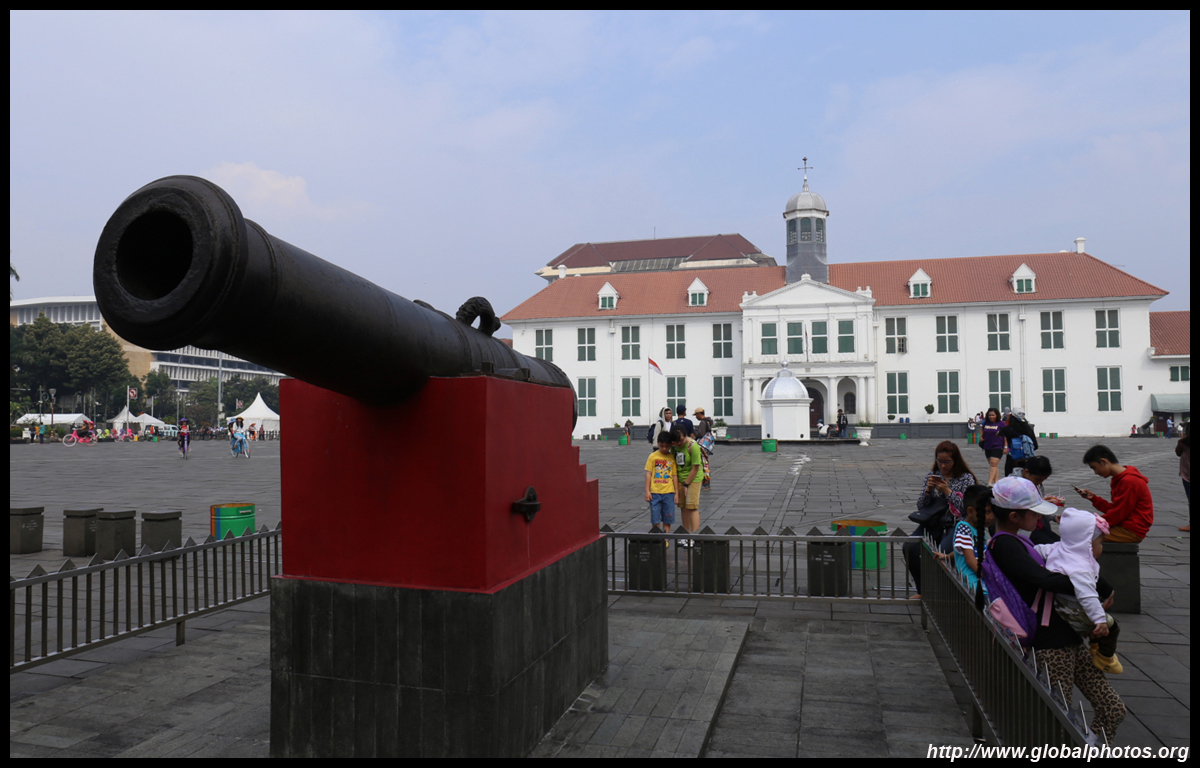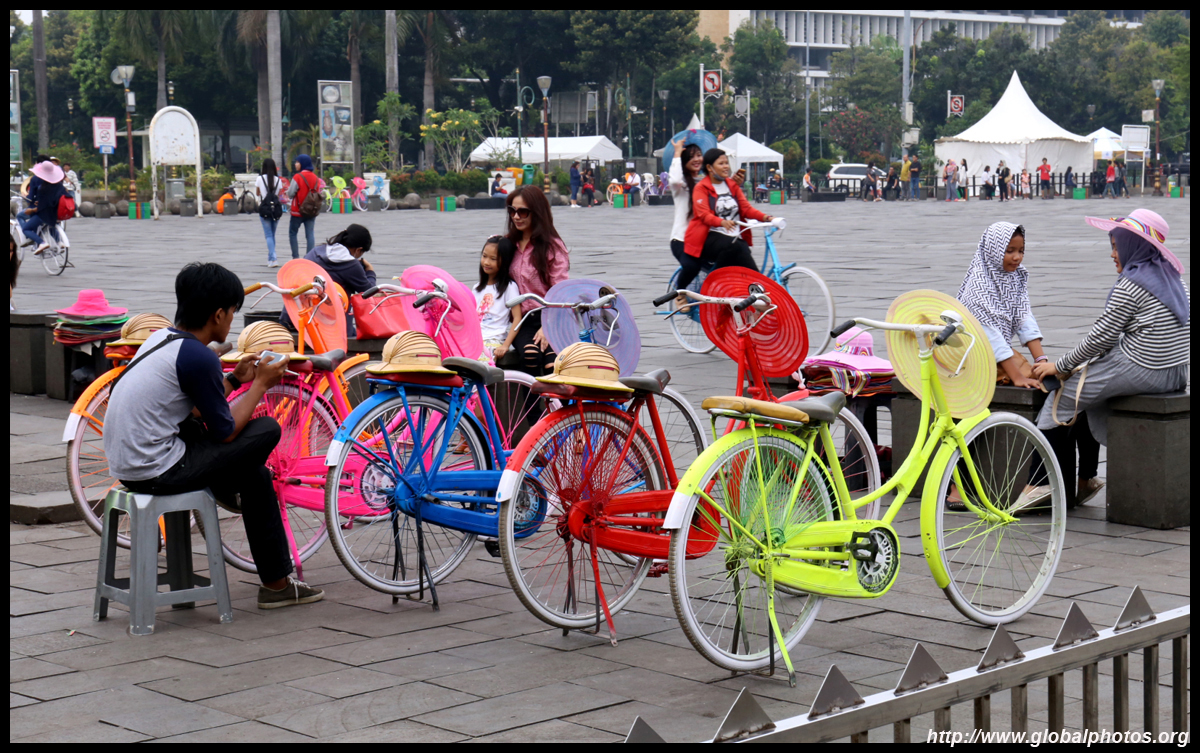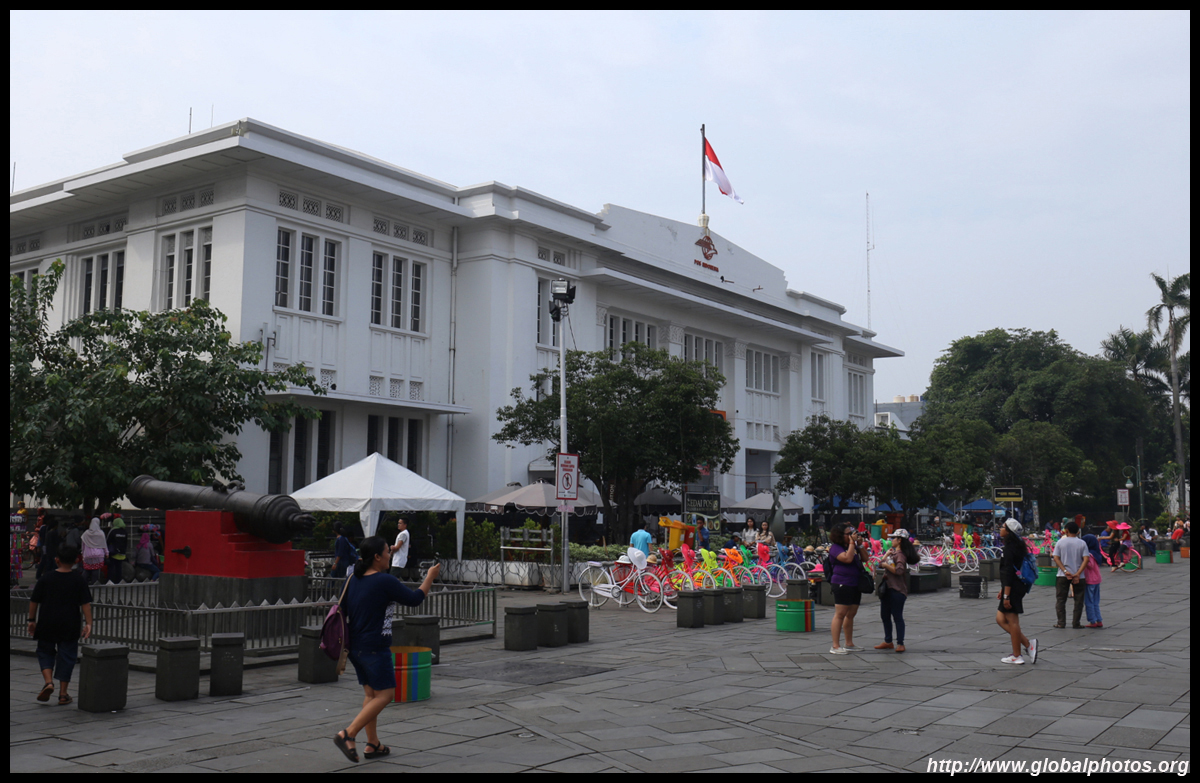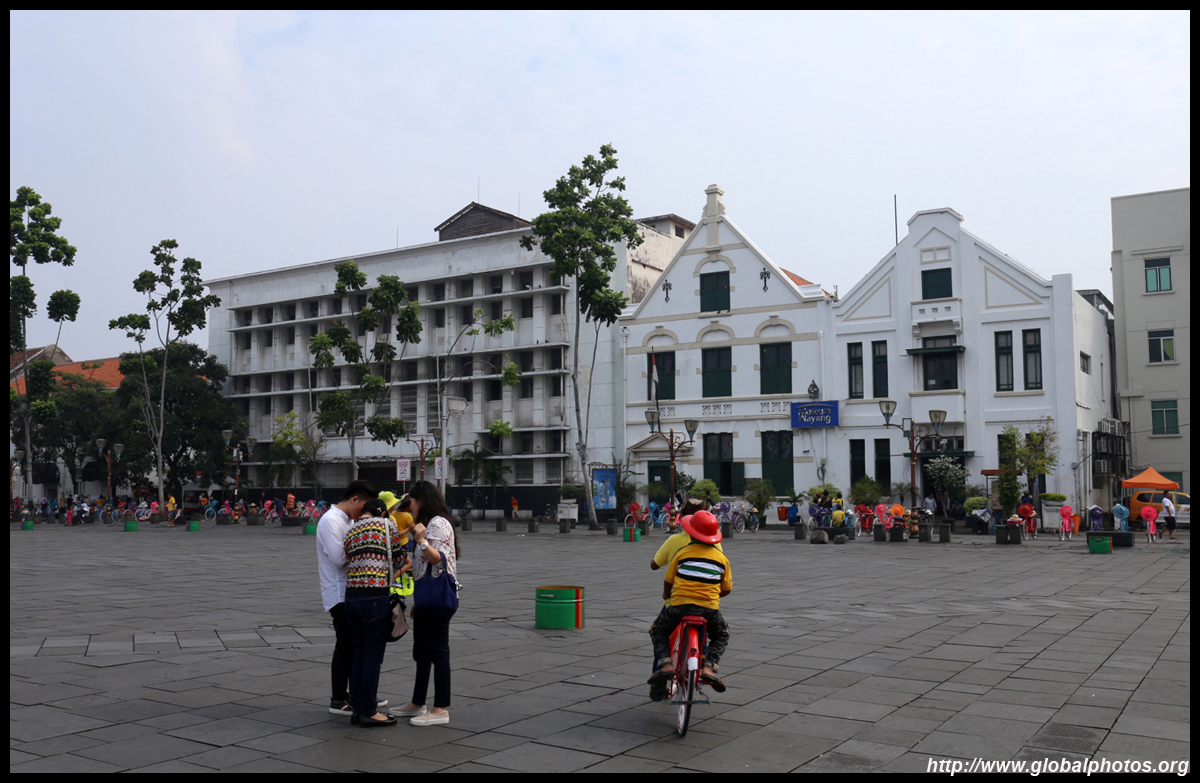From all my research sources, there was a unanimous disapproval for venturing into Jakarta for sightseeing between flights. There was nothing to see. Traffic is bad and I would miss my flight. Jams can happen at any time and I could be stuck for hours. Nevertheless, the decision was made to head out and give it a half day's chance in Kota, the historic heart.
Despite the end of Ramadan, the drive into the city was surprisingly smooth and the taxi stopped at Old Batavia in about 40 minutes only. This colonial structure was the former town hall from the Dutch days.

Colourful bicycles are available for rent with a matching hat.

The square is surrounded by imposing colonial buildings. There weren't too many people hovering around. Perhaps the city emptied out before the imminent public holiday?

The Wayang museum's dusty and badly-lit cabinets showcase Indonesian puppets in 2 colonial buildings.














There are interesting museums in Kota. Museum Bank Mandiri occupies an art deco structure and showcases the bank's history from a historic banking hall down to money counting machines.



The Chinese were known for their accounting skills back during the colonial era, and they were hired to manage money in this "Chinese" room.

The Dutch colonialists were here to extract Indonesia's natural resources.


A huge collection of vintage machinery sprinkles throughout the huge building.




